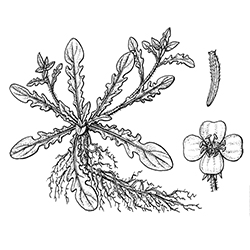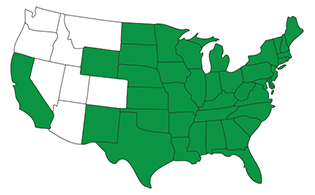

Cutleaf Evening Primrose
Oenothera laciniata
Cutleaf Evening Primrose is commonly a biennial or winter broadleaf weed, but on rare occassions, it can grow as a summer annual broadleaf weed. This versatile plant is also known as Oenothera sinuate, Raimannia laciniata and Oenothera laciniata.
Identify

Alternate

Rosette

Lobed

Lanceolate
Cutleaf Evening Primrose has an underground taproot forming a basal rosette that makes identification easy. Branching from the rosette are hairy, reddish stems that can grow either horizontally or vertically at the tips. Elongated stems can sprawl close to the ground. Cutleaf Evening Primrose can be distinguished from Evening Primrose by its leaves, which feature wavy, irregularly lobed margins, hence the name Cutleaf Evening Primrose. Blooming from May through October, this broadleaf weed produces small yellow flowers with four petals, though sometimes the flowers can be reddish-brown in color. Reproduction occurs by seeds.
Life Cycle
This broadleaf weed prefers alluvial soils and is commonly found in fields, residential lawns, gardens and along railroads and roadsides. Cutleaf Evening Primrose can be found throughout the United States, with the exception of Arizona, Colorado, Idaho, Montana, Nevada, Oregon, Utah and Washington.

Control
Trying to remove Oenothera laciniata with cultural broadleaf weed control methods—such as proper watering, mowing and weed-pulling routines—is not recommended. Physical removal (hand-pulling) can be especially difficult due to the large underground taproot.




Facebook
X
Youtube
Copy Link
Email